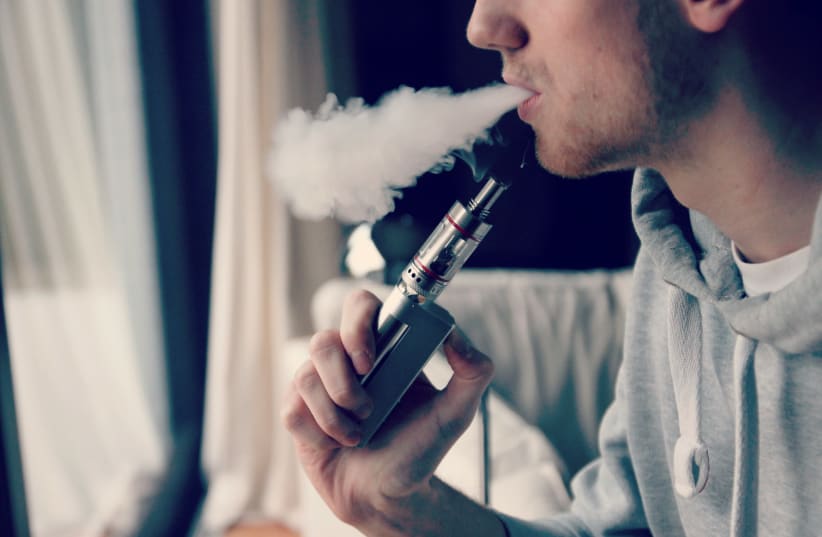Using an e-cigarette may not actually be that much safer than smoking a traditional cigarette and can still cause significant respiratory problems, both for smokers and those around them, new research published by the University of Southern California has found.
The use of e-cigarettes, known as vaping, is often marketed as a healthier alternative to traditional cigarette smoking, as they don’t contain tar, one of the main components of a traditional cigarette responsible for damaging the lungs. However, they still contain nicotine, the component that makes smoking addictive, and many other chemicals, all of which combine to create an aerosol that the user then inhales.
As more research is done surrounding the use of e-cigarettes, medical professionals are piecing together a picture of the harm that they can do. A new peer-reviewed study from the Department of Population and Public Health Science at the University of Southern California, LA, examines the impact that the secondhand smoke from vaping can cause.
Can respiratory symptoms develop as a result of secondhand vape exposure?
The study, entitled “Secondhand nicotine vaping at home and respiratory symptoms in young adults,” works to examine whether or not exposure to secondhand nicotine vape smoke is associated with adverse respiratory health symptoms among young adults.
In order to assess their objective, the research team, led by Prof. Talat Islam, examined data spanning a six-year period between 2014-2019 regarding the prevalence of bronchitis and shortness of breath in high-school students aged 17-18 years. In total, 2090 students participated in the study.
Conducting the study
During the first phase of the study in 2014, the students completed questionnaires detailing their exposure to vape smoke and their medical history. Then, three additional follow-up questionnaires were completed over the subsequent years, in 2015, 2017, and 2018.
However, of the original 2090 students, 23% left the study after the completion of high school and did not participate in any of the follow-up assessments. Nevertheless, the researchers note that the prevalence of secondhand nicotine vape exposure, bronchitic symptoms and shortness of breath did not differ substantially between those who left the study early and those who remained.
The respiratory symptoms measured were bronchitic symptoms such as wheezing and shortness of breath experienced in the last 12 months. If participants responded that they had experienced either bronchitis in the last year, a daily cough for three consecutive months, or congestion even when not accompanied by a cold, they were considered to have bronchitic symptoms.
Wheeze symptoms were based on a report of wheezing or whistling in the chest during the previous year, and shortness of breath was based on a report of having trouble breathing when hurrying on level ground or walking up a slight hill.
At each stage of the study, detailed information regarding secondhand exposure to e-cigarette aerosol, as well as cigarette smoke, was collected from the participants. Secondhand nicotine vape exposure was defined based on participants’ reports that anyone in their household, other than themselves, used e-cigarettes or other similar devices. Secondhand smoking exposure was defined based on reports of secondhand exposure to combustible tobacco.
Upon the completion of the data collection stages of the study, the research teamed turned to the statistical analysis portion of the research. They evaluated the association between secondhand nicotine vape exposure and respiratory symptoms at each stage of the study, adjusting as necessary to account for whether or not the participant themself smoked, ensuring that this would not skew the results of the study.
The results of the study
Following the analysis of the data, the research team discovered that the prevalence of secondhand nicotine vape exposure increased from 11.7% in 2014 to 15.6% in 2018, while the prevalence of secondhand smoking decreased from 26.6% to 20.6% in the same time period.
Over the study period, an increase in the prevalence of wheeze and bronchitic symptoms was observed in the study participants. Wheeze symptoms increased from 12.3% to 14.9%, while bronchitic symptoms increased from 19.4% to 26.0%. The prevalence of shortness of breath did not show any clear trend over time.
The data also showed a clear increase in respiratory symptoms in people who were exposed to secondhand nicotine vaping compared to people who were not. Compared with unexposed participants, participants with secondhand vape exposure were found to be 40% more likely to develop bronchitis symptoms and 53% to have shortness of breath symptoms, compared with participants who were not passively exposed to e-cigarettes.
Commenting on the study’s findings, the researchers state that to their knowledge, this is the first extended study-based report of the effects of secondhand nicotine vape exposure on respiratory symptoms among adolescents and young adults.
"These results have important public health implications for the population exposed to secondhand nicotine vape."
Study author
“These results have important public health implications for the population exposed to secondhand nicotine vape. Unlike active vaping and smoking, secondhand nicotine vape exposure is not a voluntary exposure,” the study’s author summarizes.
“Therefore, if the associations we observed are causal, prohibiting e-cigarette use in public places is warranted, just as secondhand tobacco smoke exposure has been prohibited in public spaces for decades, and reducing use indoors would reduce the burden of respiratory illness in the households of e-cigarette users.”

